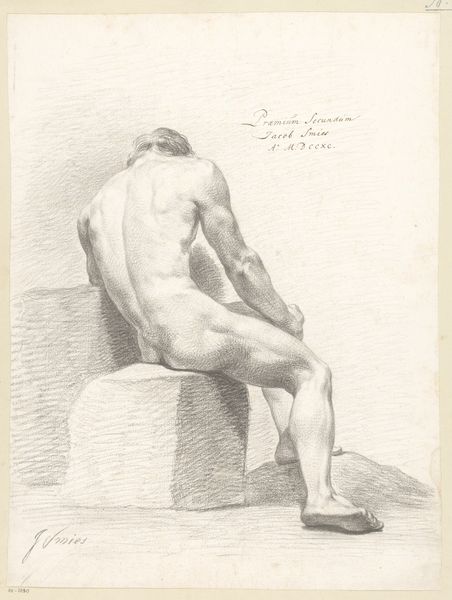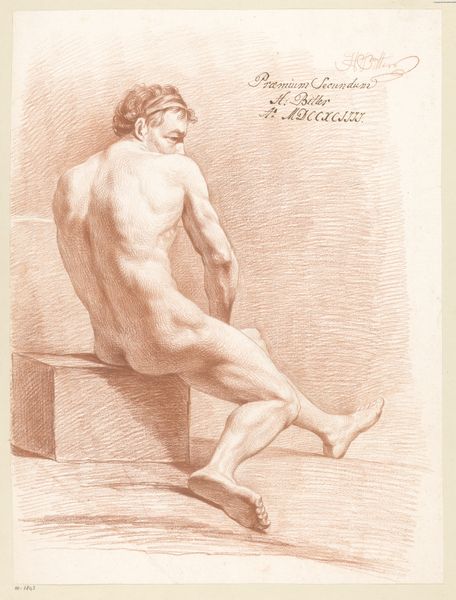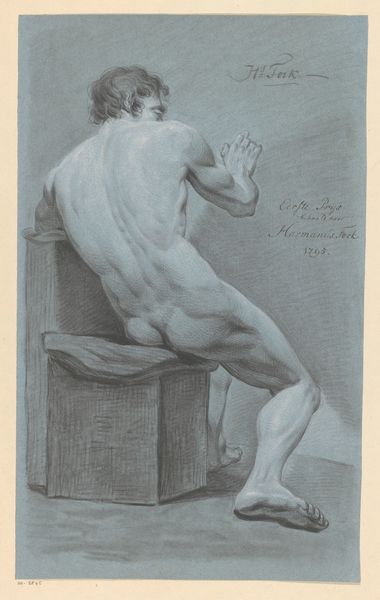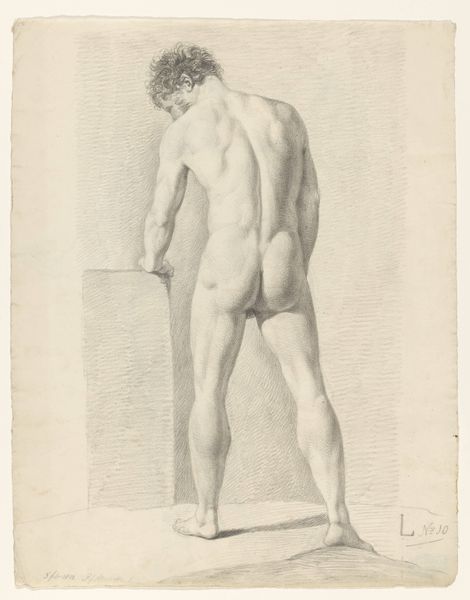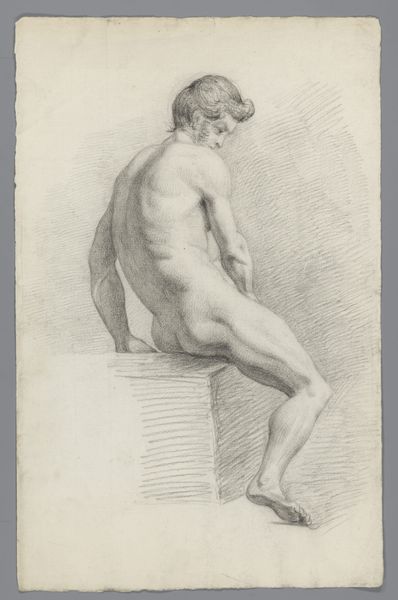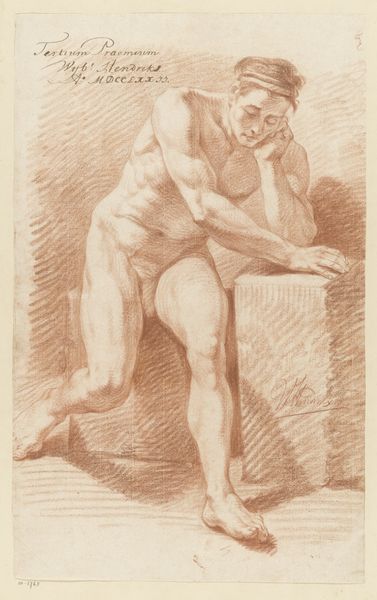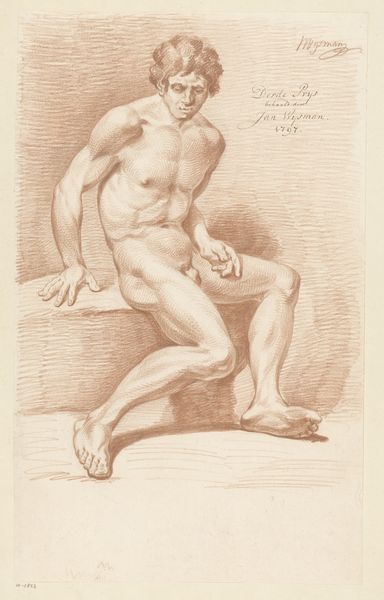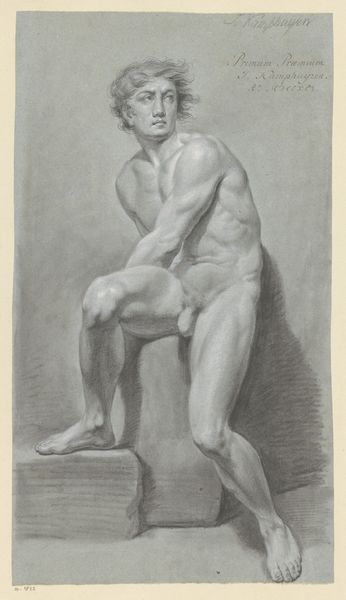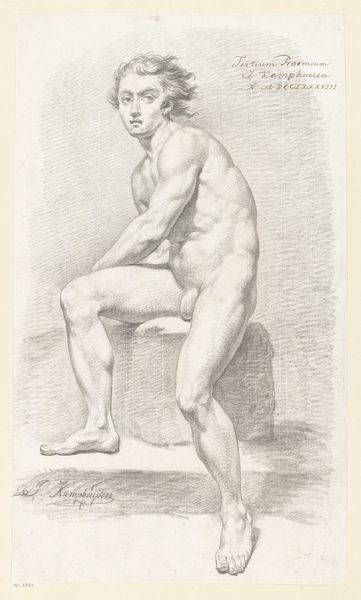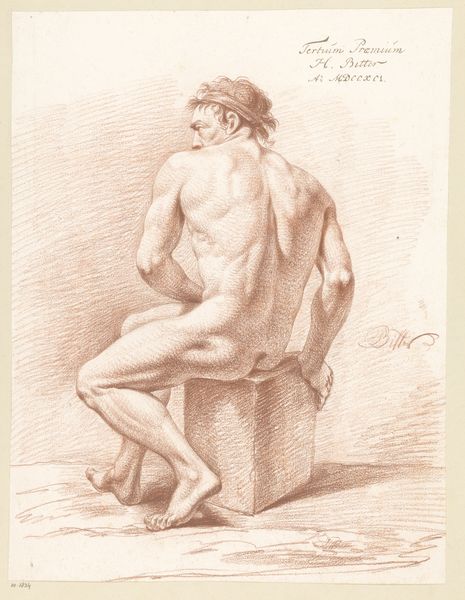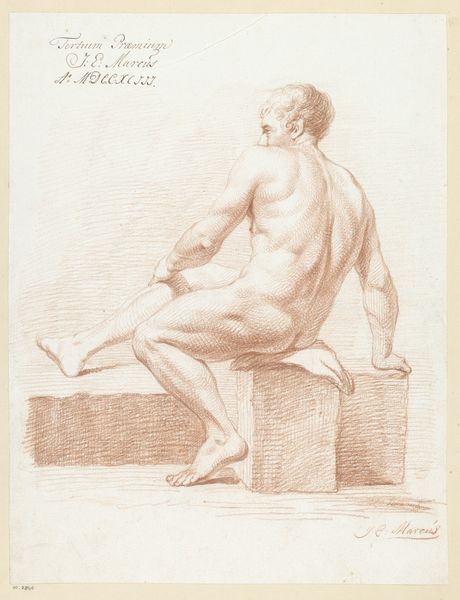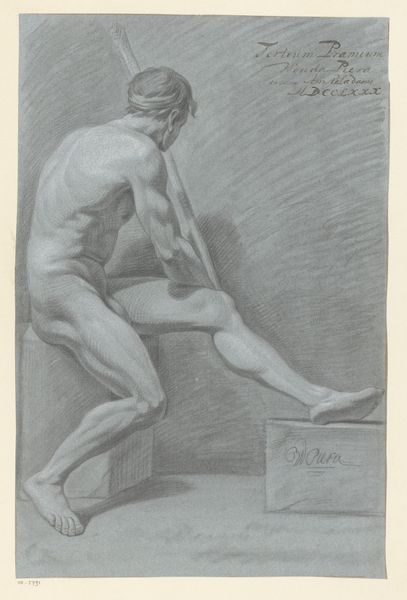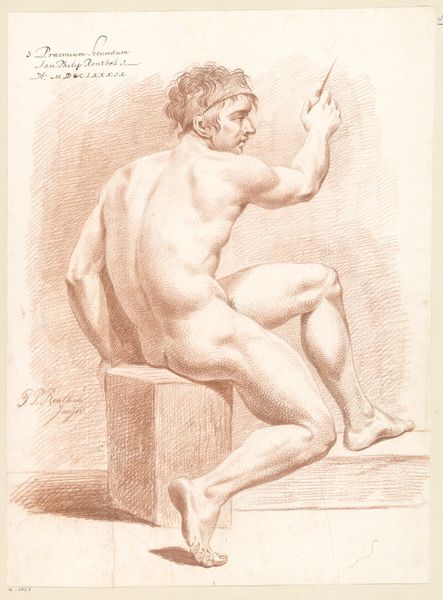
Zittend mannelijk naakt, op de rug gezien (3e prijs 1792) Possibly 1792
0:00
0:00
hermanusfock
Rijksmuseum
drawing, pencil
#
portrait
#
pencil drawn
#
drawing
#
pencil sketch
#
classical-realism
#
figuration
#
pencil drawing
#
pencil
#
portrait drawing
#
pencil work
#
academic-art
#
nude
Dimensions: height 532 mm, width 384 mm
Copyright: Rijks Museum: Open Domain
Curator: Before us is "Zittend mannelijk naakt, op de rug gezien", which translates to "Seated Male Nude, Seen from the Back," created around 1792 possibly. It’s a pencil drawing by Hermanus Fock. What are your immediate thoughts on encountering this work? Editor: There's a quiet power in the line work, a vulnerable strength. It's not about perfect beauty, but about the beautiful imperfection of the human form. And, dare I say, it reminds me a little of the quiet contemplation one finds in a really good life drawing class. Curator: Interesting observation. It's noteworthy how academic training shaped artists' approaches to depicting the human body, isn’t it? The materials – paper and pencil – were widely available, turning the art classroom itself into a production site, a training ground. The materiality is so accessible. Editor: Right? The fact that it’s a pencil drawing – there's something so intimate and immediate about it. I wonder if this was a preparatory sketch for something larger? There’s an undeniable sense of study to the image. Curator: Indeed. This drawing might have been entered in a competition; the inscription suggests it received third prize in 1792, as the annotation "3e prijs 1792" on the work signifies. So it clearly fulfilled the demands of the academic milieu. The cubes, serving as makeshift seating, denote a sense of resourcefulness. Editor: The use of the cubes is compelling too! I imagine the model perched there, the artist circling, observing, capturing the nuances of light and shadow. I find it fascinating that such raw simplicity can convey such depth of expression and artistic vision. It's not trying too hard, if you catch my drift? Curator: I follow completely. The beauty emerges through understanding anatomy, rendering it accurately. And yet, it also hints at social and class issues, by showing, through a study of a model, the kind of academic labor available at that time. Editor: Ultimately, it's more than just anatomical study for me. It’s an invitation to contemplate the shared humanity captured within those graphite lines. And that makes it quietly transcendent. Curator: I appreciate how you've made us look at the historical labor here while bringing into light its contemporary resonance.
Comments
No comments
Be the first to comment and join the conversation on the ultimate creative platform.
